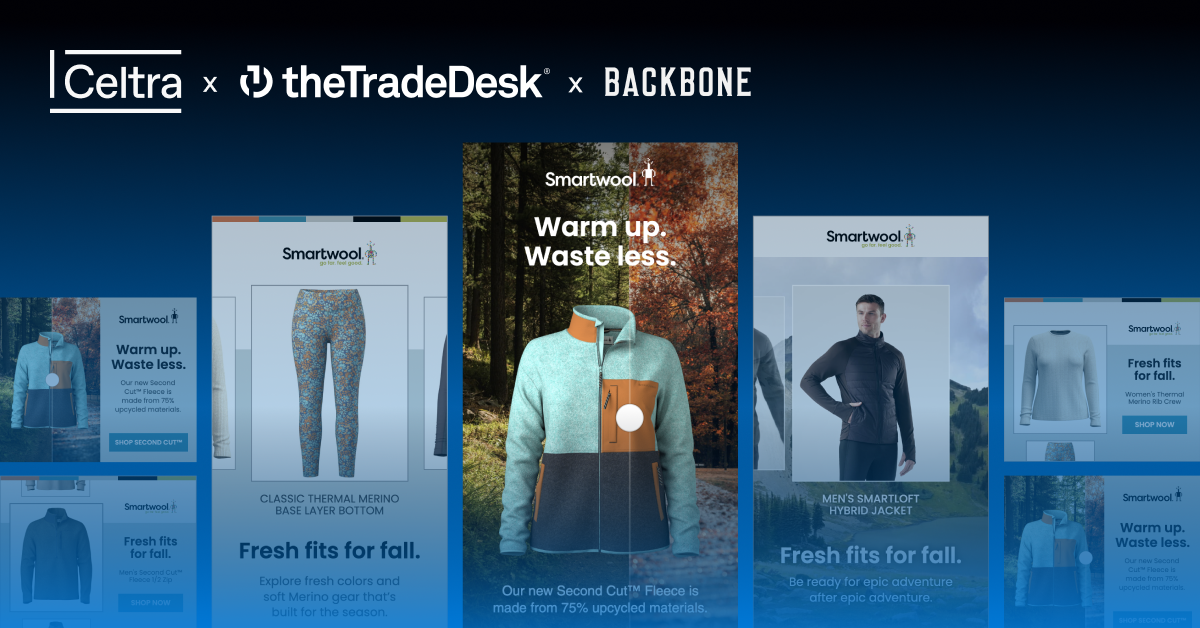This year, Celtra was present at numerous top industry events, where brands, advertisers, and thought leaders from the world’s leading companies discussed the latest digital advertising trends. It’s been a period filled with energy, innovation, and incredibly meaningful conversations across the industry as a whole. As we gear up for the final stretch of the 2024 event season, we’ve asked our VP of Sales EMEA & APAC Oliver Stewart to share his view on the key takeaways in the fields of retail and digital commerce.
5 key lessons on retail and digital commerce from 2024 events
Before we dive in, just a heads-up: this is my take and interpretation. Looking back at this year’s event season, I’ve noticed a few themes that kept popping up consistently, giving us insight into what I believe will be the direction we’re heading in 2025 and beyond. Here are five themes that stood out, offering a glimpse into the evolving fields of retail and digital commerce.
1. Creativity is no longer optional—It’s essential.
Across every session, the message was clear: creativity has evolved from a ‘nice-to-have’ to a non-negotiable asset. Sara Sjoberg from H&M perfectly summarized this when she explained that creativity must “connect to a customer’s need” and stay “super true to the brand.” The pressure to innovate in presenting products, telling stories, and fostering brand love is only increasing. Creativity is becoming the sharpest tool for cutting through the noise of saturated markets, and those who fail to leverage it risk losing relevance.
JD Sports, for instance, is moving from “digital” thinking to “customer-centric” strategies, using creativity to unify customer experiences across all touchpoints. As brands, we’re no longer just selling products; we’re selling the culture, aspirations, and moments our products enable. That shift is both empowering and essential.
2. Omnichannel isn’t just a buzzword—It’s make or break.
Omnichannel retailing has matured into a key strategic priority. It’s no longer about adding digital features or slapping e-commerce on top of physical retail—it’s about creating a seamless and unified experience across every customer touchpoint. Roger Graell Sole from BATA emphasized the importance of this evolution, describing their goal to “deliver consistency across channels and experiences.”
This isn’t just about offering more channels; it’s about ensuring every channel serves a cohesive purpose. The most successful brands are going beyond thinking in silos, integrating their physical, digital, and social commerce environments into one fluid ecosystem that tracks the customer wherever they are without interruption. Abercrombie’s Scot Lipesky echoed this when discussing how product styling, voice, and showcase methods must be “curated from global expression but accented” to fit the nuances of regional markets.
3. Data without action is pointless.
We’re drowning in data, but too many companies struggle to turn those insights into real action. While the tools and tech to capture data have evolved, what matters is how we leverage it. Marc Vicente from Kingfisher succinctly put it: “Perfection is a disease.” It’s not about gathering perfect data—it’s about quickly acting on what you have and optimizing from there.
AI and automation were hot topics, with companies like Zalando and LOEWE leading the charge in using AI to drive personalization at scale. Zalando’s experimentation with GenAI is yielding promising results, yet they were quick to acknowledge that “we’re dealing with a technology that is magical but not perfect.” Brands must be cautious not to rely on data for its own sake but to turn it into meaningful experiences that resonate with consumers.
4. Agility is the new efficiency.
In an era where speed often trumps everything else, agility is no longer just a competitive advantage—it’s essential for survival. Abercrombie’s Scot Lipesky hit the nail on the head when he said, “Agility is key—testing what works and resonates, then adapting.” In a marketplace that moves as fast as the customer, those who stand still are destined to fall behind.
We heard from PepsiCo that they’re being “adaptable to change,” using SKU flexibility and data-driven targeting to shift resources quickly and stay ahead of consumer demand. Agility is more than being fast—it’s about being fast in the right areas, testing, learning, and iterating quickly to stay ahead of trends. The brands that get this right consistently innovate without sacrificing quality.
5. Technology is a means, not an end.
Every event I attended stressed the importance of leveraging technology, but the best takeaways came from those who understood that tech is just a tool, not the destination. Mars Pet Nutrition’s Deri Watkins reinforced this point by framing digital innovation as something that should “move resources quickly to feed new capabilities.” The focus isn’t just on the latest gadgets or software—it’s on how those technologies enable better customer experiences.
Whether it’s AI for personalization or digital tools for omnichannel integration, the end goal remains the same: making life easier and more engaging for the customer. This means balancing AI’s “magical but not perfect” power, as Zalando put it, with the need for human creativity and oversight. Technology should be the enabler, not the driver.
Embracing the future of retail and digital commerce
As we head into the final months of 2024, I’m more excited than ever about what’s still to come this year and beyond. The pace of change is relentless, but so are the opportunities. In 2025, I look forward to seeing more of these themes play out, connecting with fellow industry leaders, and continuing to push boundaries as we embrace the future of retail and digital commerce.






